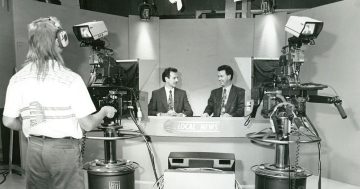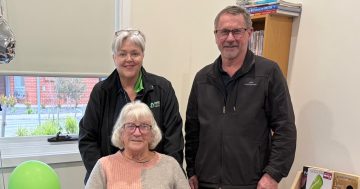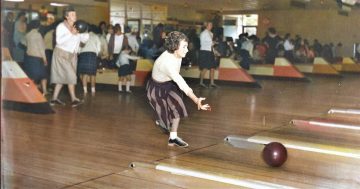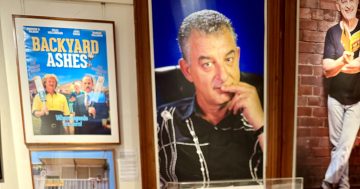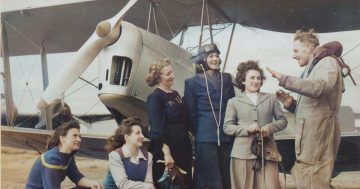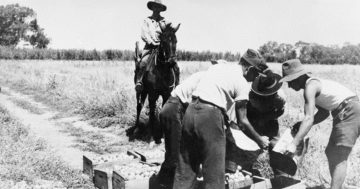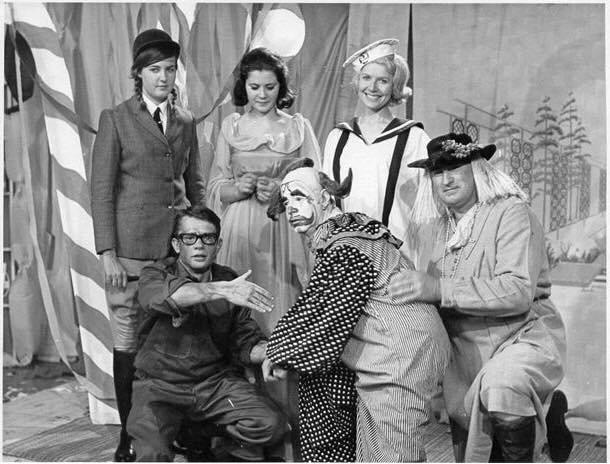
An early shot from RVN-2’s children’s programming featuring Vivienne Smythe, Robyn Griffiths, Colleen Schoff, newsreader Paul Griffiths, station manager Bill Marsden and Senior Constable Ian Mortimer. Photo: Jill Marley via Lost Wagga Wagga.
According to the Australian Video Viewing Report, the average home now has 6.6 screens through which to consume video content, but before September 1956, the cinema was the only way to watch moving pictures Down Under.
As the big cities embraced TV with enthusiasm, Wagga would have to wait another eight years, until 1964, to get in on the action.
While it was possible for early adopters in the Riverina to tweak their aerials in just the right way to catch hazy images from Shepparton, Orange and Canberra, Wagga’s own broadcast licence was awarded to Riverina Television Limited in October 1962.
Riverina Television had actually been ahead of the game, forming in 1954 as the findings of the royal commission on television were being handed down.
Radio station 2WG’s EV Roberts was appointed managing director of the company and was tasked with raising £200,000 from local investors to obtain a television licence for Wagga.
“‘It would be unreasonable to expect Riverina taxpayers to help provide TV amenities for the cities and to be left without it themselves,” he said in a statement.
“This is unnecessary, as TV is a feasible proposition for the more important country centres.”
He speculated that once a licence was obtained, they could be broadcasting in a little over a year.
“While undue optimism as to coverage must be avoided, it is expected that a surprisingly good range would be achieved,” he said.
Ultimately local media operators 2WG, The Daily Advertiser and 2LF in Young would join forces to bring TV to the Riverina.
Two years after RVN-2 was awarded its licence, the brand-new studios were completed at Kooringal and the transmission tower they shared with the ABC was in place on Mount Ulandra near Bethungra.
Station manager Bill Marsden said they had taken a more measured approach than some of the earlier stations who had gone all out with movie-style studios.
“Radio with pictures was a more sensible approach, and we set up accordingly,” he said.
Initially, they had tried to procure a site on top of Willians Hill where they would have direct line of sight to the transmitters, however, Wagga Council rejected the idea.
They had further trouble securing the alternate studio site below the hill on Lake Albert Road as it was zoned ‘residential’ and it was not until they threatened to relocate the project to Cootamundra that council agreed to re-zone it.
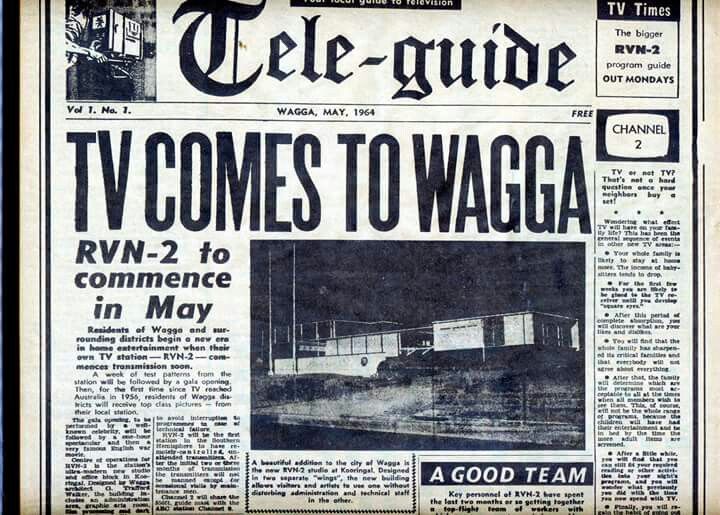
Wagga’s first TV Guide, May 1964. Photo: Supplied.
After broadcasting a week of test pattern, Wagga’s first TV station was officially declared open at a gala event at 7 pm on Friday 19 June 1964.
The Royal Australian Engineer’s Band played the Australian national anthem live before newsreader Paul Griffiths became the first face to be seen on TV in Wagga as he introduced the new station to a small but eager viewing audience.
Along with an address from chairman WJ Hucker and the minister for national development, David Fairbairn, the inaugural broadcast featured an in-house documentary on the construction of the broadcast facilities.
The footage was captured with a wind-up Bell and Howell 16 mm camera and some years later, station manager Bill Marsden confessed to using smoke and mirrors to complete the program.
After discovering that they hadn’t actually filmed anything at the main site between the foundations being laid and the equipment being installed, Bill decided to get creative.
“I filled in the gap by taking the camera to the new tech college being built and took shots close up of framework, people hammering, plumbing etc, which faked the missing bits splendidly,” he recounted in 2003.
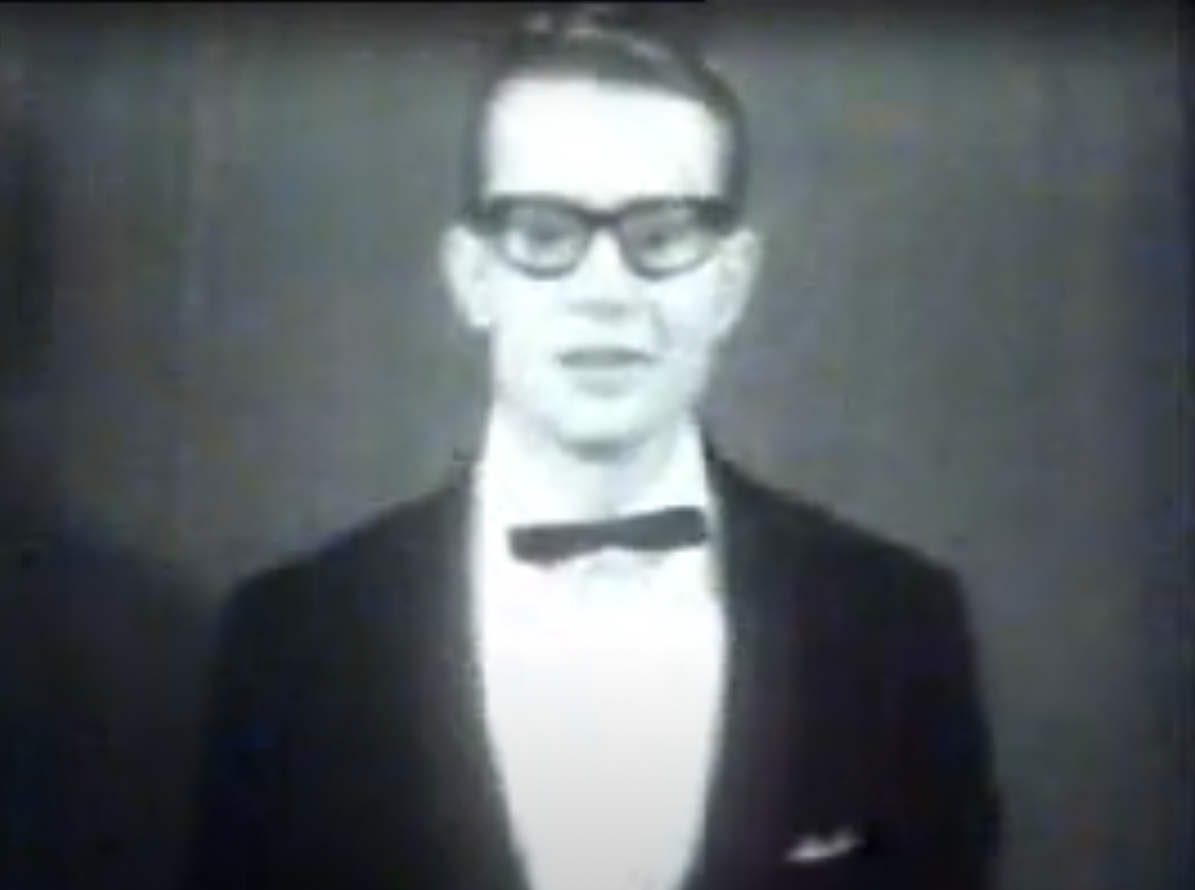
Newsreader Paul Griffiths’s face was the first to appear on RVN-2 in Wagga on Friday 19 June 1964. Photo: YouTube.
The opening night line-up also featured The Frank Ifield Show, a documentary called Hollywood: The Golden Years, the movie The Dam Busters and a Jack Benny special.
All the local commercial breaks were presented live from the studio and Bill said it was “bedlam changing the sets every few minutes”.
“We had about 24 on staff and everyone had to do many jobs,” he recalled.
“Those first few years demanded dedication from all hands, and I will always be grateful for their enthusiasm and support.”
Bill’s modest approach proved successful and he proudly declared that “RVN was the first, and only station to make a profit in its first year. Small, admittedly, but very satisfying”.







